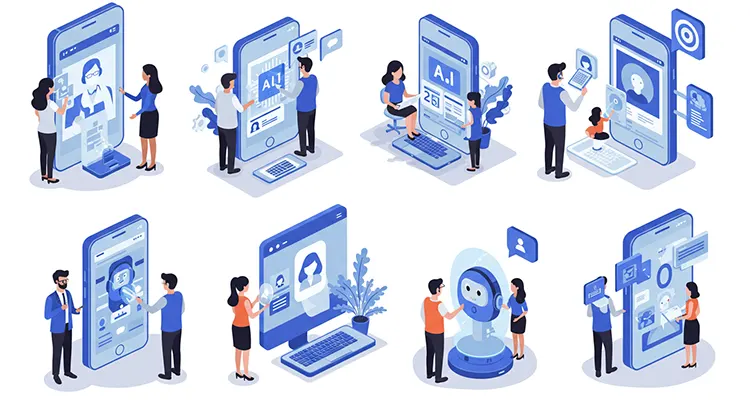The Role of AI in Transforming Customer Experience Across Channels

In the fast-evolving landscape of customer experience (CX), artificial intelligence (AI) has emerged as a cornerstone for delivering personalized, efficient, and seamless interactions. As businesses strive to meet rising customer expectations, AI-powered tools are reshaping contact centres, enabling them to anticipate needs, streamline operations, and foster loyalty. This article explores how AI is revolutionizing CX, drawing insights from industry thought leaders on call intent analysis, personalization strategies, and the integration of advanced technologies.
Understanding Customer Intent Through AI
At the heart of exceptional CX lies the ability to understand why customers reach out. As Joe O’Brien from Sabio Group notes in “Decoding Customer Desires,” call intent analysis, powered by AI, is critical for decoding the primary reasons behind customer interactions, whether through phone calls, chats, or emails. AI-driven analytics platforms process vast amounts of data to identify patterns, detect sentiment, and predict future intents, enabling real-time responses tailored to individual needs. For instance, a major airline’s Intent Capture & Analysis project revealed unexpected customer intents, leading to £2.2 million in savings and a 22% reduction in contact centre workload.
This approach extends beyond traditional phone calls. Patrick Martin from Coveo, in “The Personalization Imperative,” emphasizes that AI unifies the customer journey across channels, empowering self-service and agent-assisted support. By analyzing customer behavior and preferences, AI ensures that interactions are contextually relevant, reducing frustration and enhancing satisfaction. For example, Xero’s integration of Coveo’s generative answering technology increased self-service resolution by 20% and reduced search times by 40%, showcasing AI’s potential to deliver precise answers instantly.
Personalization: The New Expectation
Customers today expect personalized experiences, with 81% preferring companies that tailor interactions to their needs, as Martin highlights. AI facilitates this by analyzing historical data to offer recommendations and anticipate queries. However, as Shane Devitt from ContactCenterPro Consulting warns in “The CX Buzzword Hall of Shame,” terms like “AI-powered” are often misused, with many chatbots relying on rigid scripts rather than true intelligence. To deliver genuine personalization, businesses must invest in robust data management and Agentic AI, which can make autonomous decisions to resolve issues efficiently.
Michael Wiesblatt from Genesys, in “Are Customers (and Agents) Truly Different?”, underscores the universal demand for personalization across generations. While Millennials and Gen Z prioritize brand reputation for service (65% in Canada), all age groups value knowledgeable agents and first contact resolution (FCR). AI tools that surface real-time answers empower agents to meet these expectations, boosting satisfaction and loyalty. Wiesblatt notes that 73% of consumers would buy more frequently from brands offering high personalization, highlighting its impact on revenue.
Streamlining Operations with AI
AI’s transformative power extends to operational efficiency. Pablo Sanchez from Atento, in “The Journey to the New World of AI,” describes how their AI Center of Excellence (CoE) integrated AI into CRM processes, halving resolution times and improving customer satisfaction by 22%. By automating routine tasks, AI frees agents to focus on complex issues, enhancing productivity and reducing costs. Sanchez emphasizes that AI is a partner, not a replacement, for human agents, a sentiment echoed by Wiesblatt, who highlights AI’s role in easing agent pain points.
However, implementing AI requires strategic planning. Sanchez’s CoE brought together diverse experts to ensure holistic development, while Nicholas Clapper from Cloudli, in “How to Deliver Excellent CXs,” advises small and mid-sized businesses (SMBs) to focus on the “Big Four” elements—speed, convenience, knowledgeable help, and friendly service. AI-driven tools like skills-based routing and analytics dashboards align with these priorities, enabling SMBs to deliver enterprise-grade CX without excessive complexity.
Challenges and Future Directions
Despite its potential, AI adoption faces challenges. Devitt critiques the overuse of buzzwords like “omnichannel” and “seamless,” noting that many solutions fail to deliver truly connected experiences. Customers often repeat themselves across channels, undermining trust. To address this, businesses must integrate AI with robust data systems to ensure continuity, as Martin suggests. Additionally, Wiesblatt points out that current self-service options, like chatbots, are less valued across generations, indicating a need for smarter, more conversational AI.
Looking ahead, AI will continue to evolve. Sanchez envisions AI progressing from business insights to front-end customer interactions, while Martin predicts a rise in omnichannel support that fosters two-way conversations. For SMBs, Clapper recommends streamlined AI solutions to future-proof operations, ensuring they remain competitive in a CX-driven market.
Conclusion
AI is redefining CX by enabling businesses to understand customer intent, deliver personalized experiences, and optimize operations. By leveraging insights from call intent analysis, Agentic AI, and strategic implementation, companies can meet evolving expectations and drive loyalty. However, success requires moving beyond buzzwords to invest in genuine, data-driven solutions. As businesses navigate this AI-driven landscape, those that prioritize customer-centricity and operational efficiency will lead the way in delivering exceptional CX.


